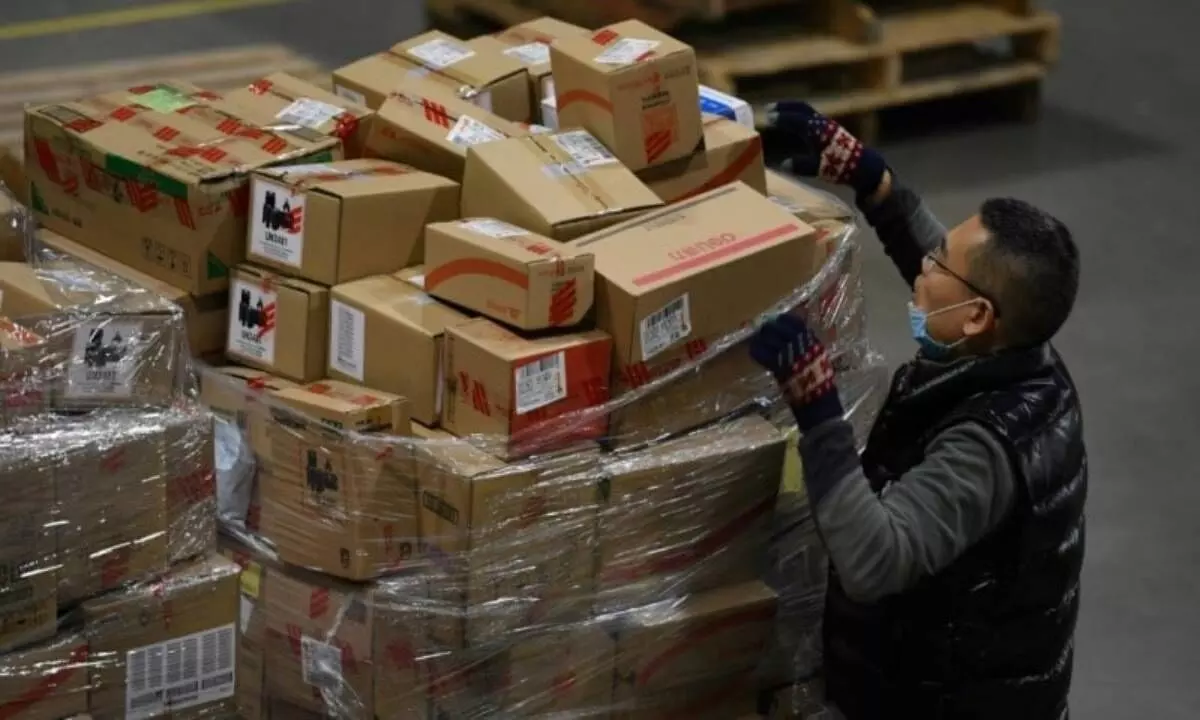Tariffs on Chinese Goods Hit Triple Digits, Supply Chains Shift
U.S. raises tariffs on Chinese goods to 145%, prompting global supply chain shifts, rising prices, and trade uncertainty for businesses.
image for illustrative purpose

The United States has escalated tariffs on Chinese imports to unprecedented levels, reaching as high as 145 per cent, creating immediate disruption for both Chinese exporters and American importers. These sharp tariff hikes have led companies on both sides to reevaluate supply chains and shift sourcing strategies, with direct implications for U.S. consumers and global markets.
American firms, facing soaring costs, have begun canceling or delaying shipments of Chinese goods. Some U.S. companies, including those in the textile sector, have already paused imports. Ryan Zhao, director at Jiangsu Green Willow Textile, confirmed that companies are unable to estimate future retail prices in the U.S. due to the unpredictable impact of tariffs that have surged from 10 per cent to 125 per cent in the past two months. He warned of product shortages by June, noting that ocean freight from China typically takes up to four months.
The White House confirmed the effective tariff rate now stands at 145 per cent, which analysts say makes further trade infeasible. According to a Tax Foundation economist, triple-digit tariffs functionally sever trade links.
Despite the rising trade barriers, the U.S.-China trade relationship will not unravel overnight. Tony Post, CEO of Topo Athletic, revealed that while Chinese suppliers initially absorbed tariff costs, the magnitude of recent hikes is unsustainable. He anticipates inevitable price increases for U.S. consumers.
Post said his company is now expanding partnerships with Vietnamese suppliers, mirroring a growing trend among American businesses to diversify sourcing. Prior to the tariff escalation, Topo Athletic projected close to $100 million in revenue, driven primarily by U.S. sales.
Efforts to resolve trade tensions have stalled. China has responded with reciprocal tariffs and restrictions on American companies. Capital Economics forecasts an 80 per cent decline in Chinese exports to the U.S. over the next two years. Goldman Sachs, citing trade friction and global slowdown, has revised China’s GDP growth estimate to 4 per cent. The bank also noted the high employment risk, estimating 10 to 20 million Chinese workers are tied to U.S.-bound exports.
China's government is now focused on increasing domestic consumption. The Ministry of Commerce has convened industry leaders to formulate strategies aimed at boosting internal sales. However, domestic demand remains weak, with consumer inflation declining again in recent data. Economists say China may resort to subsidies, trade diversion, and selective concessions to mitigate the fallout.
Despite U.S. efforts to localize manufacturing, business leaders argue that replacing Chinese suppliers is not straightforward. Ford, in a recent tariff exemption request, stated that key manufacturing tools cannot be sourced domestically due to the lack of technical expertise. Tesla and others have filed similar appeals. Goldman Sachs data shows that for 36 per cent of U.S. imports from China, over 70 per cent originate exclusively from that market.
Conversely, only 10 per cent of Chinese imports rely on U.S. suppliers, highlighting the asymmetry. China remains a critical source for electronics, machinery, and consumer goods, underscoring the complexity of decoupling.
U.S. Census Bureau data shows China was the second-largest supplier of American imports in 2024, with a 2.8 per cent increase to $438.95 billion. Mexico retained the top spot, while imports from Vietnam have more than doubled since 2019. Chinese firms are accelerating investment in Southeast Asia, Latin America, and the Middle East to reduce exposure to U.S. markets.
Xi Jinping is scheduled to visit Vietnam, Malaysia, and Cambodia next week, reinforcing China's trade pivot. According to industry insiders, American regulators are expected to scrutinize re-routed Chinese goods, raising the risk of expanded restrictions.
While the U.S. administration has temporarily paused tariff hikes for nations outside China, uncertainty persists. Steve Greenspon, CEO of Honey-Can-Do International, noted that while his company has shifted operations to Vietnam, long-term planning remains difficult amid evolving policies.
Analysts such as Gary Dvorchak suggest that the latest tariff escalation may be strategic posturing ahead of a possible trade agreement. He indicated that the mutual economic risk could push both nations to negotiate, though the timeline remains unclear.

